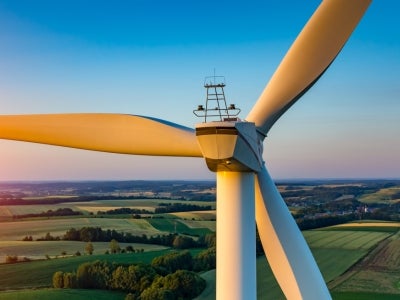Main Issue
The Paris Agreement under the UN Framework Convention on Climate Change (UNFCCC) entered into force in November 2016; marking a new era of climate action that will put the world on a path to eliminating carbon from the global economy by the second half of the century.
Taking action on climate change means adopting and implementing ambitious programs to limit emissions of greenhouse gases to levels compatible with the well-being of the ecosphere, while supporting communities around the world to adapt to the unavoidable impacts of the climatic changes that are already being observed. It also means embracing the potential of the green economy - a more sustainable way of life that balances economic, social, and environmental priorities.
We can mitigate climate change by reducing greenhouse gas emissions in a variety of ways. These include promoting greater energy efficiency and use of renewable energy, as well as building more sustainable urban transport. Since land, forests, and oceans store carbon, we also need to adopt smarter ways to preserve and restore these “carbon sinks.” Adaptation helps people cope with increased risks to their lives and livelihoods from a changing climate. Climate change is already affecting weather patterns, water resources, crop yields, and marine ecosystems. The poor, who are least able to cope, are the hardest hit. Increasingly, policymakers recognize the need to integrate climate-resilient strategies into long-term development programs.
What We Do
Climate Change Mitigation
The GEF has several key roles to play under the Paris Agreement. The GEF serves as part of the financial mechanism of the Agreement, which also established a process for ensuring that all actions on climate change are fully transparent with a mechanism for helping countries meet that goal.
The GEF’s climate change mitigation strategy, which is financed through the GEF Trust Fund, supports developing countries as they make transformational shifts towards net-zero greenhouse gas emissions and climate-resilient development pathways with two fundamental pillars:
- Promoting innovation, technology development and transfer, and enabling policies for mitigation options with systemic impacts, across four key entry points:
- Accelerating the efficient use of energy and materials
- Enabling the transition to decarbonized power systems
- Scaling up zero-emission mobility of people and goods
- Promoting nature-based solutions with high mitigation potential
- Fostering enabling conditions to mainstream mitigation concerns into sustainable development strategies
- Supporting capacity-building needs for transparency under the Paris Agreement through the Capacity-building Initiative for Transparency (CBIT)
- Supporting relevant United Nations Convention obligations and enabling activities
Owing to the integrated nature of GEF support, climate change mitigation benefits are also generated through programmatic approaches at a regional and global level:
- Providing global and regional support for strategic areas with potential to generate global lessons and promote technology transfer
- Generating climate change outcomes through integrated programs with systemic impacts, and by strengthening interaction and integration between climate change mitigation and the other GEF focal areas
More details on each one of the objectives above are provided in the Climate Change Mitigation page.
Climate Change Adaptation
The GEF’s climate change adaptation strategy for the 2022-2026 period, which covers the Least Developed Countries Fund (LDCF) and the Special Climate Change Fund (SCCF), aims at supporting developing countries to move to a climate resilient development pathway while reducing exposure to the immediate risks posed by climate change. Over 2022-2026, the two funds are supporting countries across four key adaptation themes:
- Agriculture, food security, and health
- Integrated water resource management to address water security, droughts, and flooding
- Nature-based solutions
- Early warning and climate information systems
Other context-specific priority adaptation topics may also be supported. The GEF aims to support transformational adaptation, while contributing to climate-resilient recovery from the impact of the COVID-19 pandemic.
More details on the LDCF and SCCF climate adaptation programming are available on the Climate Change Adaptation page.
All our projects and programs can be consulted in our database for detailed descriptions of activities and results.
Results
GEF-funded projects have had a tangible impact on climate change. As of 2023, results included:
- Reducing the vulnerability of over 61 million people in more than 130 countries.
- More than $7.6 billion in mitigation finance programmed jointly with $60.6 billion from other partners, through more than 1,100 projects.
- Over 9.5 billion metric tons of CO2 equivalents of expected greenhouse gas emission reductions.
- Support to 88 countries to build institutional and technical capacity for enhanced transparency with $146 million through the CBIT, and an additional programming envelope in GEF-8 of $75 million.
- Over 650 projects with private sector co-financing, more than 141 of which included equity, loans or risk-mitigation instruments, leveraging an average co-financing ratio of 1:9.
- Over 180 million hectares under sustainable land management, benefiting more than 90 million smallholders
Looking Ahead
Under GEF-8, the Global Environment Facility will continue to foster the shift to a low-carbon economy by supporting creative thinking and innovative financing. The GEF’s efforts are structured to address the key decisions for the Paris Agreement, and to further support climate action in developing countries. The framework is aligned with the GEF's innovative project designs, proven track record of support for technology transfer, and ability to attract private sector co-financing.
The operationalization of the Green Climate Fund has added to the evolving context in which the GEF operates, and the two institutions are collaborating closely through the Long-Term Vision on Complementarity, Coherence, and Collaboration. The GEF-8 Climate Change Focal Area Strategy is complementary to programming by the Green Climate Fund and other climate funds and lays the foundation for enhanced climate action by harnessing synergies across the different focal areas and building on the GEF's record of driving innovation.







